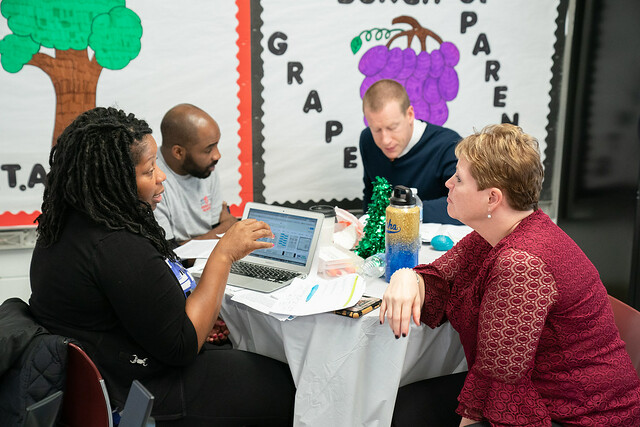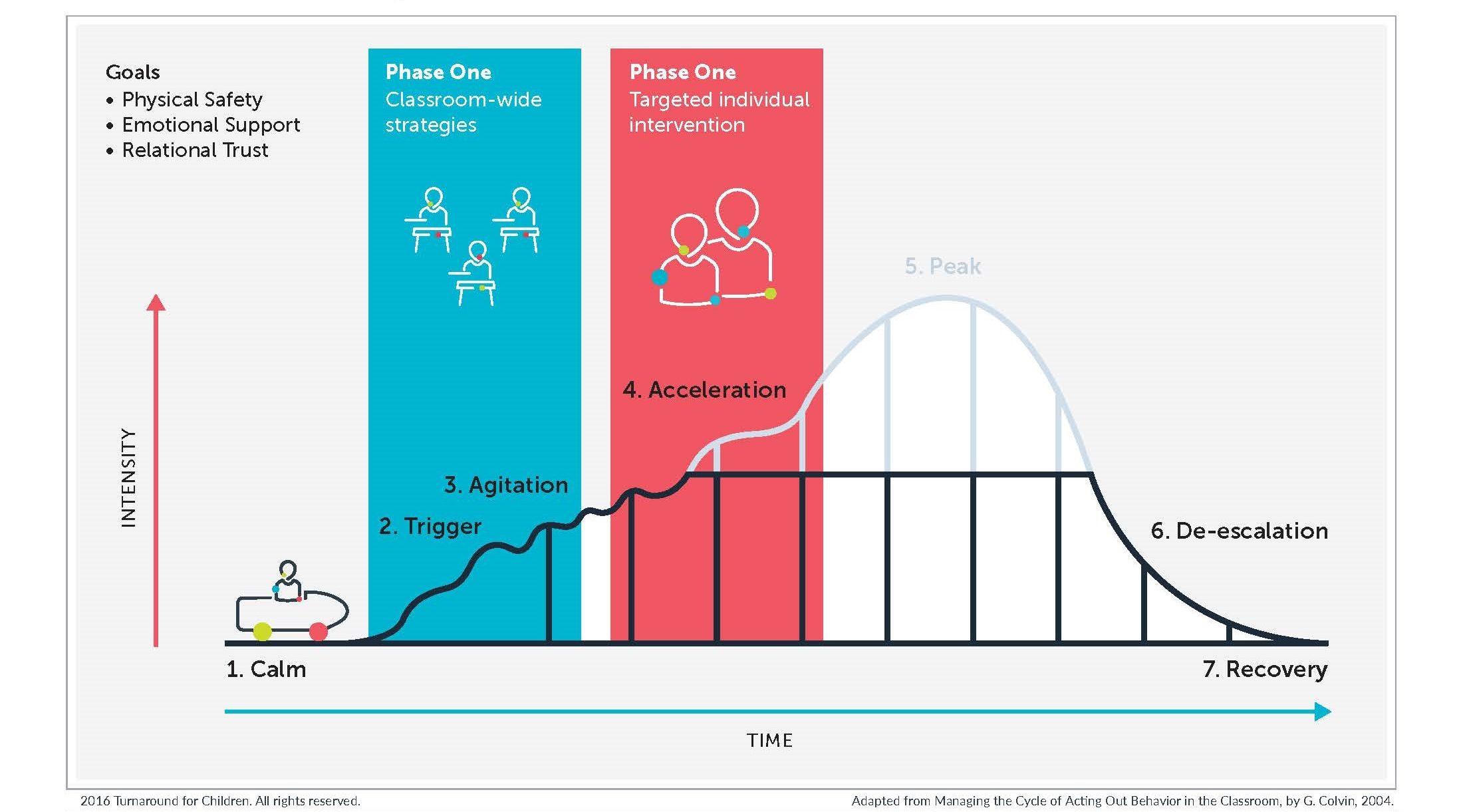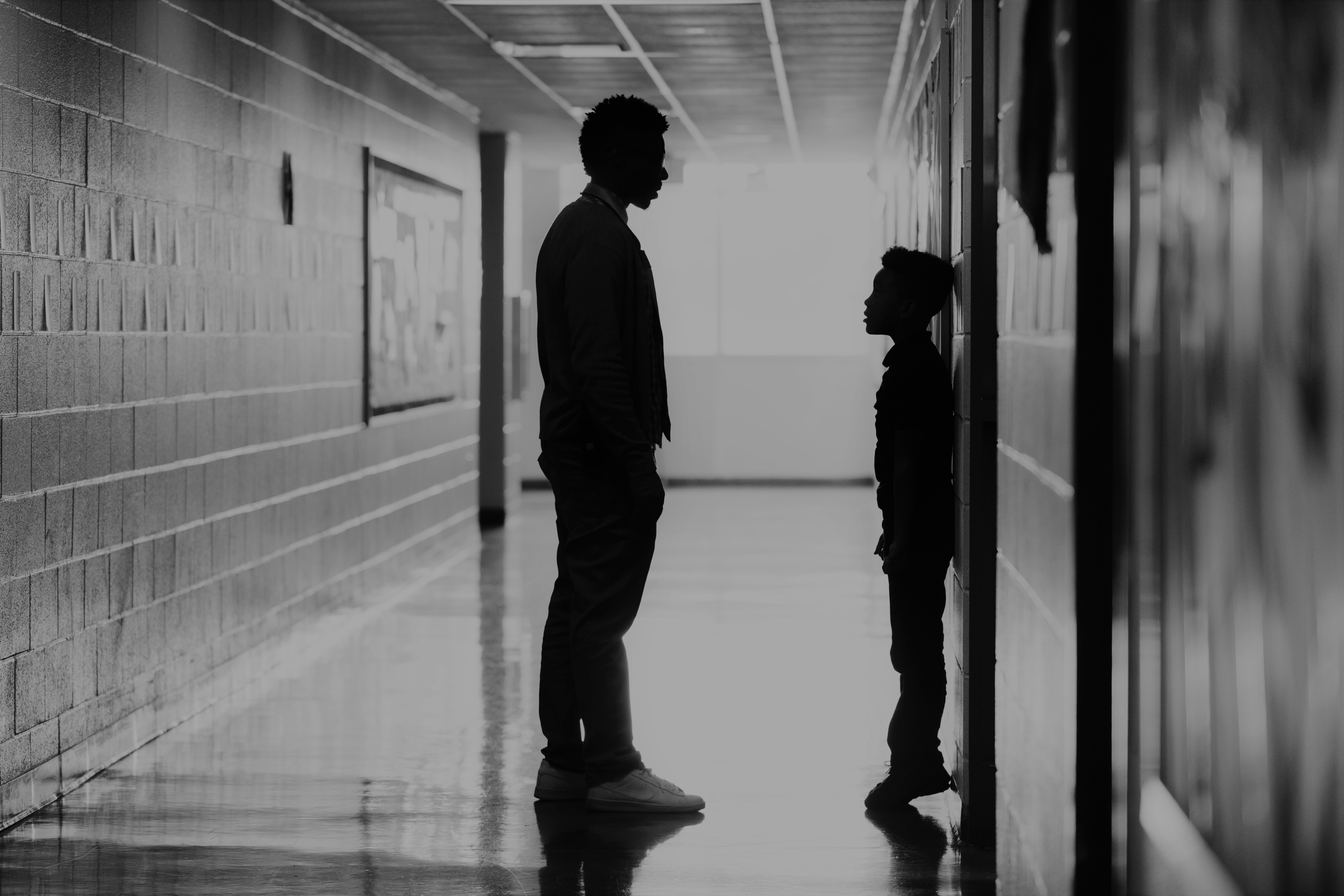How to Build an Effective System for Responding to Behavioral Infractions
By Dawn Foreman, Partnership Director, Turnaround for Children
We have all seen it: the cycle of misbehavior. In my experience, it usually goes something like this:
- A student gets triggered by something that has been said or done
- A teacher or classmate says or does something that further escalates the student
- The teacher gets frustrated and puts the triggered student out of class
- The principal or other person responding to the incident calms the student down, then takes the student back to class
- The classroom teacher is not yet ready to receive the student back and says or does something that re-triggers or even re-traumatizes the student
- The chain of events starts all over
Students come into school every day with a backpack filled with experiences. Some of those experiences are positive, happy ones with family and friends and others are not. In the schools where Turnaround works, many of the children have experienced trauma or other forms of adversity, such as witnessing domestic violence, residing in an area with a high rate of crime, living with family members who are suffering from substance abuse or missing loved ones who are incarcerated.
When children experience stress, their bodies release the hormone cortisol. When that stress is unbuffered by a trusted adult, high levels of cortisol can lock students into a state of “fight, flight or freeze,” preventing them from being able to self-regulate or be fully available to learn. Students who experience toxic stress are more likely to exhibit behavior challenges and/or learning difficulties in school. When schools do not have a strong system or adult strategies for managing behavior challenges, there are often increased incidences of students leaving class without permission, roaming the halls and causing harm to themselves or others.
The way school staff respond to a student in crisis will either help or hinder the child’s ability to self-regulate and will either build or erode the level of trust a student has toward adults in the school. Having a consistent and effective system for responding to behavior challenges is one way a school can become trauma-informed and reduce the stress response that is negatively impacting some of its students.
It is critical that schools think out every step of how they respond to behavior:
- from before a discipline referral is made
- to what happens when a referral is made
- to how the referral is handled
- to what happens after the refferal

The author, Dawn Foreman (right), at a Professional Learning Series session in Washington, D.C.
As a partnership director in Washington D.C., I lead a Professional Learning Series (PLS) with two clusters of District of Columbia Public School (DCPS) principals, and work directly with four DCPS elementary schools. Two of the PLS sessions are entirely focused on providing knowledge and resources to participants regarding revising or creating a trauma-informed system for responding to behavior in their schools. Three of the four schools with whom I work have chosen to ensure their system for responding to behavior infractions is trauma-informed, that is, making sure they respond in a way that does not re-trigger or re-traumatize. Each school selected an area of focus based on data collected from Turnaround’s Schoolwide Environmental Assessment Tool (SEAT), which evaluates the schoolwide systems and processes that need to be improved. In the PLS sessions, we take a deep dive into each school’s current system to make sure the processes and strategies are in place for responding to behavior infractions. Click here to see a tool we use to engage principals in this work.
In addition to supporting the principals in examining their current system for responding to behavior, I work with the first responders, those who are identified to respond when a child’s behavior escalates. We have spent time talking about the science of brain development; the phases of acting out (adapted from the work of Colvin & Sugai – see Figure 1); techniques that can be used to de-escalate behavior; and the use of logical consequences.

Figure 1
Today, principals are beginning to co-facilitate, along with the members of their school team who are responsible for handling student behavior a series of professional learning sessions for their teachers and other staff on the phases of acting out, the use of de-escalation strategies, logical consequences and types of teacher language (reinforcing, reminding, redirecting).
With this shift in practice and mindset, teachers are now focused on building relationships with students and creating environments that are safe, calm and predictable. When a school adopts a trauma-informed system for responding to behavior, more students can stay in class and continue with their learning.


Share This Story